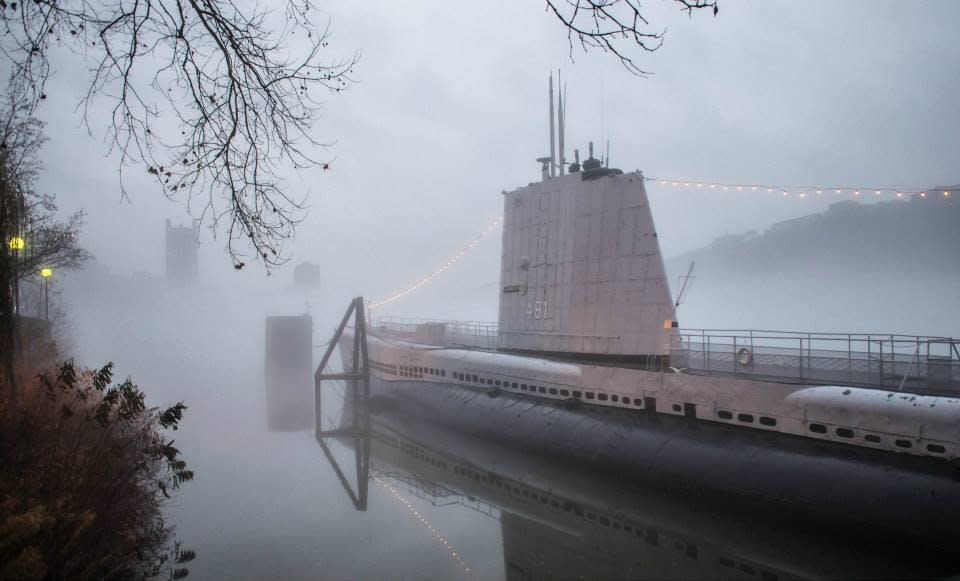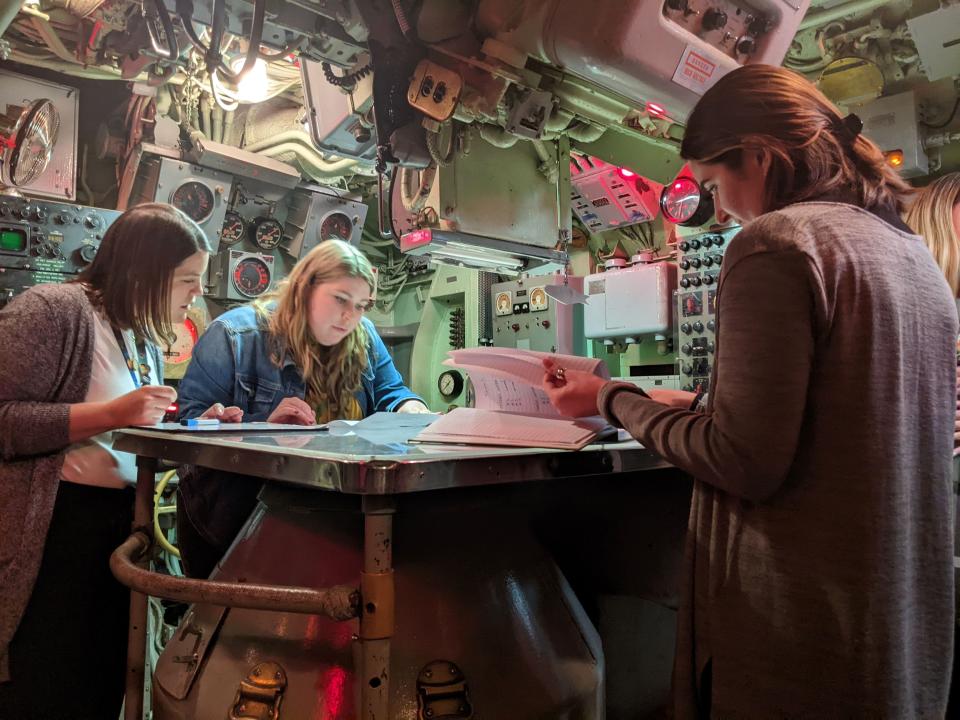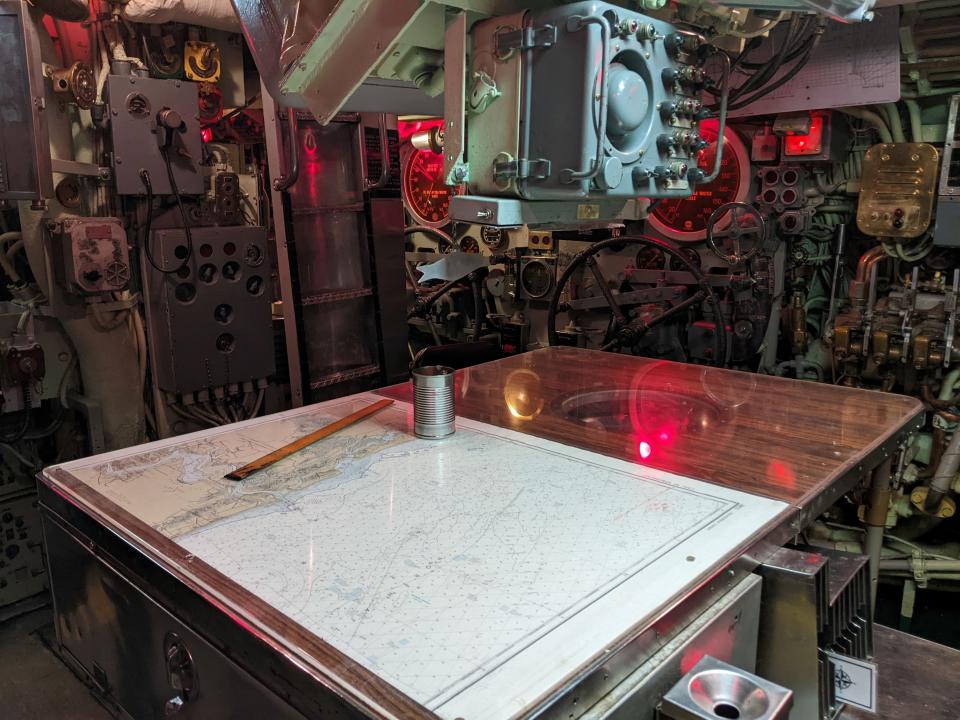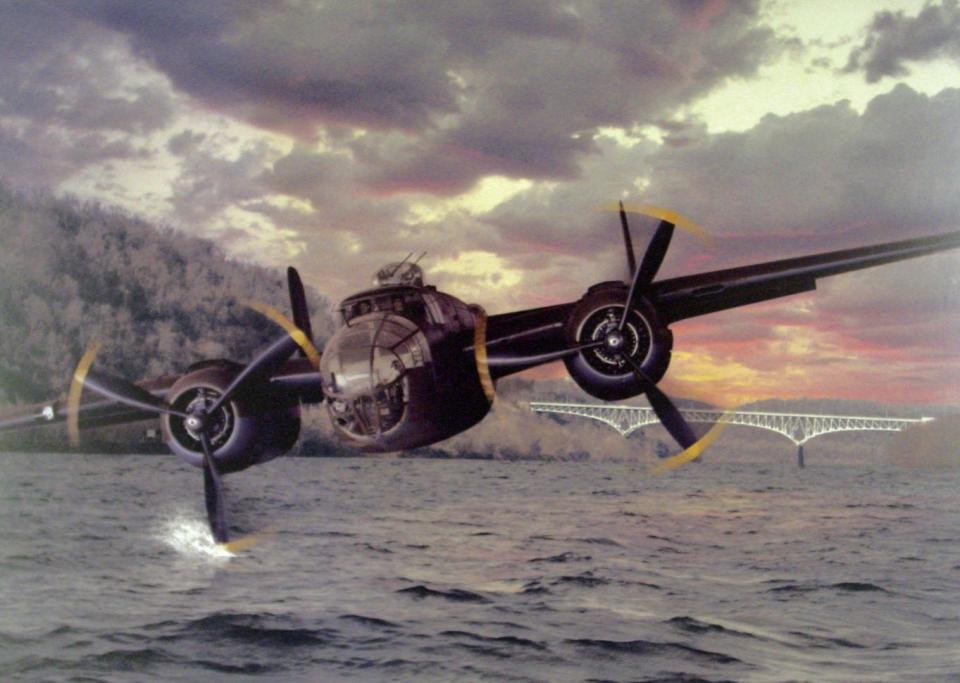Take the escape room challenge aboard a WWII submarine at Carnegie Science Center
PITTSBURGH ― Climb aboard and into a World War II submarine for a one-of-a-kind escape room experience at the Carnegie Science Center.
As they race the clock to solve puzzles, escape room participants will gain knowledge about the USS Requin, and see if they can solve a mystery of Pittsburgh: What happened to the B-25 Mitchell bomber that crashed into the Monongahela River on Jan. 31, 1956, never to be seen again?
Puzzles and games about Pittsburgh history and science are the clues groups of visitors need to piece together to successfully complete the escape room challenge aboard the USS Requin, moored next to the science center on Pittsburgh's North Shore.

The limited-time escape room runs Sept. 1 through Oct. 28, with sessions at 5:30 and 7 p.m. daily. Advance tickets are required by visiting carnegiesciencecenter.org.

The cost is $200 per group of four to six people ($175 for Carnegie Science Center groups of 4-6).
The age minimum is 13; (ages 13-17 must be accompanied by an adult).
Full mobility is required for the experience.

Requin history
The Navy’s first Radar Picket submarine patrolled the Pacific just days before the end of World War II. The USS Requin's 80-man crew went on to accomplish defense and scientific missions, some of which remain classified to this day.
Weather and river conditions permitting, science center visitors can take self-guided tours of the sub as part of general admission between 10 a.m. and 4:20 p.m. daily.
More: Underground Railroad Walking Tour with guest speakers event set for New Brighton
The missing B-25 Mitchell
Sixty-seven years ago, at the peak of the Cold War frenzy, an American military plane crashed into the Monongahela River, sparking one of western Pennsylvania's most enduring unsolved mysteries.
All six crew members survived the crash, but two of the men drowned trying to swim to shore in the 34-degree water.
The B-25 Mitchell had been flying over Pittsburgh on a routine training flight from Nellis Air Force Base in Nevada to pick up a cargo of airplane parts at Olmstead Air Force Base in Harrisburg.
According to the Heinz History Center of Pittsburgh, "At around 4 p.m., the crew reported a loss of fuel and requested permission to land at Greater Pittsburgh Airport. When Maj. William Dotson realized their fuel wouldn’t last, he instead asked to land at Allegheny County Airport. At 4:11 p.m., with his fuel supply completely empty, his engine malfunctioning, and without any available airstrips nearby, Dotson was forced to make a hasty decision. As his B-25 Mitchell bomber glided silently over the Homestead High Level Bridge (today’s Homestead Grays Bridge), Dotson made a wheels-up splash landing into the Monongahela River near the Glenwood Bridge in Hays.
"In the ensuing hours, a Coast Guard cutter – the Forsythia – snagged a wing of the submerged plane while dragging its anchor. But the line slipped, and the B-25 slid to its watery grave, never to be seen again," the Heinz History Center account explains. "The search efforts by the U.S. Coast Guard and the Army Corps of Engineers continued for 14 days but the bomber was never recovered."

For the past 67 years, researchers and conspiracy theorists have pondered how a 15-foot-high bomber could go missing in a 20-foot-deep river.
Several once-classified documents have helped shed light on the B-25’s mysterious flight, but its final resting place is still unknown, the history center says.
Many believe the U.S. military secretly recovered the plane’s wreckage immediately after the crash to conceal its true and perhaps dangerous or mysterious contents.
Some believe the bomber may have been carrying a nuclear weapon or a UFO from Area 51 in Nevada.
Many others believe the then-highly polluted Mon River corroded the aluminum exterior of the aircraft decades ago, leaving only the steel engines and landing gear.
"In more recent years, a team of volunteers known as the B-25 Recovery Group worked with the Heinz History Center with the hopes of locating the lost plane," the center says. "Despite extensive research, sonar scanners and remote-controlled cameras, the Recovery Group found no evidence of the plane during several attempts. To this day, the “Ghost Bomber” remains one of Pittsburgh’s most famous unsolved mysteries."
Newspaper clippings, documents, photos and film related to the crash and subsequent search missions and video of the Recovery Group’s efforts, are exhibited at the Heinz History Center, in Pittsburgh's Strip District.
Scott Tady is entertainment editor at The Times and easy to reach at stady@gannett.com.
This article originally appeared on Beaver County Times: WWII submarine in Pittsburgh beckons to escape room enthusiasts

